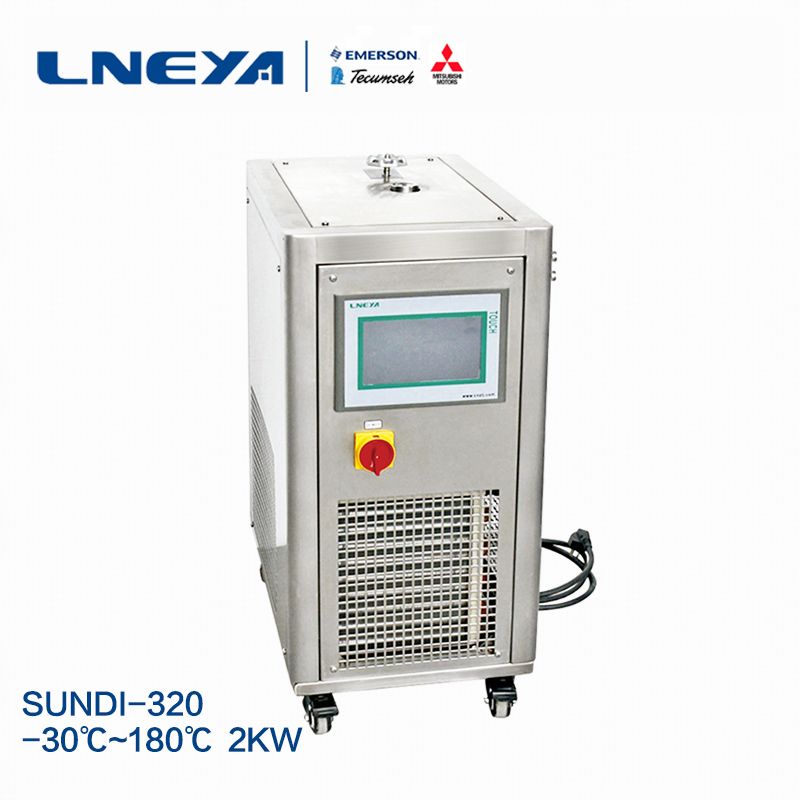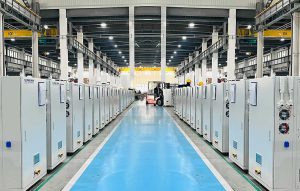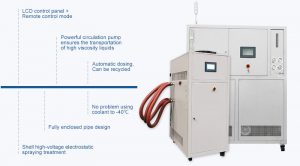Cooling heating temperature control system SUNDI series thermal fluid filling instructions
1. Refrigeration heating temperature control system SUNDI series equipment before the heat conduction filling, the heat transfer liquid inlet of the heating refrigeration circulator and the heat transfer liquid outlet of the upper end of the reaction kettle are connected by stainless steel bellows, and the heat transfer oil outlet of the heating and cooling circulator and the lower end of the reaction kettle are connected. The heat transfer oil inlet is connected by a stainless steel bellows.
2. Turn on the exhaust valve directly above the heating and cooling circulator device and open the filling port.
3. Heat injection into the filling port (filling the expansion liquid level line), turn on the SUNDI series power supply of the cooling and heating temperature control system, press the liquid filling button (the system will automatically remove the air), interval 30 seconds, off Broken liquid button (continuously adding heat transfer medium in the process until the heat transfer medium is heard back to the dosing tank at the SUNDI series system exhaust valve of the refrigeration heating temperature control system).
4. After the entire refrigeration and temperature control system SUNDI series circulation system is filled with the heat transfer medium (including the reactor jacket), the expansion tank liquid level index position is the liquid level (when the system has basically eliminated the air).
5. Turn off the SUNDI series exhaust valve of the cooling and heating temperature control system, then turn off the dosing button and turn on the running button.
6. Set the temperature to 150 degrees and continue to vent (if there are a lot of bubbles in the process, you need to close the running button and repeat the C step). After reaching 150 degrees, run for about 5 minutes and reset the temperature to 25 degrees. After the target value is reached, it can be basically determined to exclude system air.
7. After use, just turn on the cooling and heating temperature control system SUNDI series running button to set the temperature. (The heat transfer medium is not water)

Special Note: When filling the heat-conducting medium, care must be taken to prevent the heat-conducting medium from overflowing to the upper cover; spilling into the upper cover liquid may cause the heat-conductive medium to leak into the electrical equipment of the device, which may cause equipment short-circuit, electrical failure, control system failure; The heat transfer medium is flammable and explosive, which may cause burning and explosion.
In this way, it seems that the thermal fluid filling instructions of the SUNDI series of the refrigeration heating temperature control system are relatively simple. You can follow the instructions to operate one by one.
Raccomandazioni correlate
-
Perché le aziende elettriche hanno bisogno di refrigeratori industriali?
902When electrical equipment is operating outdoors, it may encounter high temperature environments. For example, in direct sunlight in the summer, the temperature may be very high. If the equipment overheats, it will affect performance or even ...
Visualizza i dettagli -
Why does the glass reactor need a heating refrigeration circulator in use?
888The glass vacuum reactor is of double-layer glass design. The inner layer is filled with reaction solvent for stirring reaction, and the interlayer can be connected with different cold and heat sources (freezing liquid, hot water or hot oil) for c...
Visualizza i dettagli -
Cooling water circulator for BMS testing of liquid-cooled battery packs
965As the weather temperature gradually increases, the use of liquid-cooled battery pack BMS test cooling water circulators also gradually reaches its peak. Liquid-cooled battery pack BMS test cooling water circulators have rated power ranging from s...
Visualizza i dettagli -
The Advantage Parameter Explanation Of The Walk-In Lab Water Chiller
906In the experimental equipment, the walk-in lab water chiller is used for all kinds of electronic components in high and low temperature or hot and wet environment to test the requirements of various performance indicators. It is generally applicab...
Visualizza i dettagli
 Refrigeratori industriali LNEYA Produttore Fornitore
Refrigeratori industriali LNEYA Produttore Fornitore












